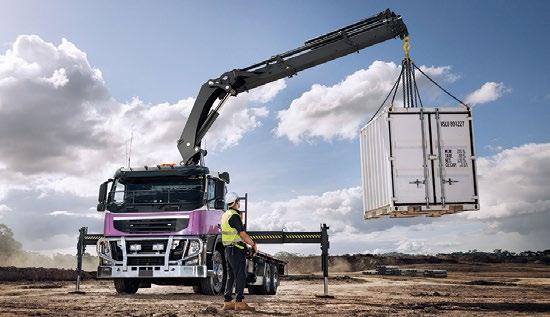
4 minute read
PASMA Focus
Choosing a safe mobile access tower
When you buy or hire a mobile access tower, you want to be sure you’re getting a safe product that’s right for your job. PASMA recommends you consider five areas.
1. Brand
Choose towers that have been manufactured by PASMA members, who prioritise safety first. It’s a condition of membership that their towers meet the most up do date standards and are independently certified by a recognised certification body. If you are hiring, a PASMA hire centre provides the same reassurance. If you need someone to assemble, ask a PASMA hire & assembly member.
2. Certification
Double check that your tower is certified to design standard EN 1004. This means it’s been independently checked and certified by a recognised certification body. To be doubly sure, ask your supplier for a copy of the certificate. If they can’t provide it, you should seriously consider another source – a reputable supplier will be able to give it to you.
Certification to EN 1004 guarantees the tower meets minimum safety requirements in place across Europe, such as:
• Purpose designed platforms with safe trapdoor entry and exit
• Built in access for safe ascent and descent
• Supplied with the correct size and quantity of stabilisers to prevent overturning
• Have the correct quantity and number of guardrails with the correct gaps and dimensions to prevent a fall
Note: there are various tower configurations that aren’t covered by EN 1004, which come under BS 1139-6. However, this article is specifically about EN 1004 access towers - that’s a straight up and down, single bay structure with four legs and wheels.

3. Capabilities
EN 1004 allows for mobile access towers to have different capabilities. When you’re choosing a tower, pay attention to its designation code to make sure it will meet your needs. It will be marked on the tower and in the user
Awkward access challenges?
There are a whole range of scaffold towers available, from towers with advanced features like bridges or cantilevers right up to completely bespoke structures. So, what are the advantages of choosing aluminium towers for your awkward access job?
• Quick to build and dismantle – suiting tight timescales
• Lightweight – essential when the floor/ground can’t hold steel or powered access
• Low carbon footprint – it travels in a transit van, not a 10 tonne truck
• Aesthetically pleasing – aluminium looks good in high profile locations
• Flexible – gets into awkward spaces
• Collective fall prevention at all times – no harnesses required
• Competitively priced
When you’re looking for a company to install a tower structure for you, including complex, non-standard configurations, the service you need is known as ‘hire & assembly’. For a list of PASMA hire & assembly members: https://pasma.co.uk/ hire-and-assembly/ instructions – an example is EN 1004-3-8/12-ABXX-H1. When it’s broken down, this code tells you several things:

• The load that can be placed on the working platform
• The maximum height it can be built to indoors and outdoors
• The types of built in access that are available
• The clear height i.e. the free height available for someone to move around on the platform
4. Training Even an EN 1004 tower is only safe if it’s assembled, inspected, used and dismantled by a competent person, who should have completed a PASMA Towers for Users training course while their managers and supervisors should complete PASMA Towers for Managers.
5. Instruction manuals
Even though the person assembling the tower is trained, they must always follow the instruction manual provided by the manufacturer or hirer. Manuals are considered so important for safe use that they have their own special standard, because they contain critical safety information, including:
• How to assemble the tower without ever standing on an unprotected platform
• Which stabilisers or outriggers to use for the height of the tower you’re building
• Guidance on maximum allowable side loads, such as the wind or use of high pressure jets
• The maximum safe working load that a single platform and the whole tower can support
• A schedule of the components and their number required for each configuration
A library of manuals can be found on PASMA’s website/app.
With these five steps covered, you’ll have the peace of mind you need to get on with the job at hand. Whatever you do, don’t be tempted to buy a so called ‘DIY tower’ – there’s a reason they are a lot cheaper!

EN 1004 is changing
A new edition of EN 1004 - EN 1004 Part 1 - was published last year with the changes applying by 30th November. The main points to note are:
• All towers are now in scope – even those under 2.5 metres
• Towers will be even safer, thanks to various improved safeguards
• Smaller maximum distance between platform levels and the ground and first platform
• Expect innovations as manufacturers gain more freedom to develop products. Learn more at pasma.co.uk/en1004












